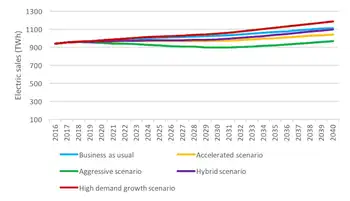Time to encourage biomass growth
UNITED KINGDOM - For some time, biomass has been seen as the emerging sibling of the renewable energy industry.
Despite much of the development behind the industry's technology worldwide, the UK's position at the front of the biomass revolution has been slipping.
Developers have naturally concentrated on cheaper forms of alternative energy, chiefly onshore wind, whilst other countries have stolen a march, with the Chinese particularly active by building hundreds of stations based on UK power plant models.
In recent months, however, we have seen something of a change in the UK, with a backlash against many more established alternative energy sources.
In the transport sector, biofuels have been attacked for their effect on food prices and actual carbon reductions, while wind has been criticized for its inability to produce a consistent stream of electricity and for its cost.
Many industry experts are now suggesting that biomass has to play the primary role in helping the EU to meet its challenging target of generating 20% of its energy from renewable sources by 2020.
Biomass works by converting (normally through burning) biodegradable matter such as wood, straw and agricultural wastes into heat or electricity.
Because it uses organic materials, any carbon dioxide released during the generation of energy is offset by that absorbed during the plant's life, so the process as a whole is broadly balanced, or "carbon neutral".
Crucially, it is an effective method of producing energy.
A single power station can produce around three times more energy as a windfarm for the same amount of generation capacity. It is also reliable and can be scaled up or down to meet consumer demand.
Of course, every technology has its drawbacks and there has been criticism of biomass because of its sourcing needs.
The requirements to power a single station can be extensive, particularly if it is using wood as its primary fuel source.
Some plants within the UK propose to import timber from as far away as Canada and Indonesia; this can potentially have a huge impact on the carbon footprint of the feedstock and the energy that it produces.
That's not to say that all biomass projects suffer from these issues. Some developers are now looking to generate energy by burning straw, which the UK has an abundant supply of and which, as a by-product of agricultural crops, does not have an impact on the food verses fuel debate currently engulfing the biofuel industry.
Supermarket giant Tesco has recently been given a green light to build Britain's first ever straw-powered Combined Heat and Power (CHP) plant to meet the electricity and heating needs of one of its distribution centres.
Utilising straw for biomass represents one of the most efficient methods for its disposal and pre-empts the need for it to be ploughed back into the land.
As a final, but vital, benefit, the UK can meet all of its requirements from domestic sources, cutting out the need to import supplies and allaying growing concerns over energy security.
Whereas heat for domestic-scale commercial installations could come from solar technologies or even heat pumps, it is widely acknowledged that the primary market can only be supplied by biomass.
After all, most heat comes from combustion of a fuel, and biomass is the only renewable and combustible fuel.
So what next for the industry? More than £3.5bn ($7billion) was invested last year and this figure looks set to grow substantially, as green investment funds try to hedge against the credit crunch by diversifying their portfolio of renewables schemes.
Already a stream of projects are either coming online or expecting to do so shortly, including the world's largest plant near Port Talbot, South Wales.
Signs from government are also encouraging. Changes to its proposed Renewables Obligation Certificate (which offers incentives to suppliers to generate energy from renewable sources) will increase the value of energy generated by biomass in comparison with other sustainable technologies and make it more rewarding for investors to back.
In June, the Department for Business, Enterprise and Regulatory Reform (BERR) published its Renewable Energy Strategy that also made clear the important role that the industry could play, noting that there is a need to "develop a sustainable biomass market".
While this in itself is encouraging, there remains some concern over the detail.
The proposals mooted in the strategy have been primarily designed to make individual action more palatable, specifically a feed-in tariff to encourage microgeneration technologies in homes and a financial incentive mechanism to facilitate a general increase in use of renewable heat.
What they have not done, however, is to provide significant encouragement for commercial developers. There is a definite feeling by many in the industry that the current system is over-complicated and that applications are too frequently caught up in red tape.
By laying down a clear pathway that developers can follow, the government will be able to stimulate growth and at the same time provide the financial community with the confidence necessary for it to make the long-term substantial investments.
The result will be a step-change in the UK renewable sector as a whole, and the first step towards meeting the EU's 2020 targets.
Related News

Tesla plans to reveal electric transport truck in October
LONDON - Tesla is likely to unveil its electric articulated transport truck in October, chief executive Elon Musk said on Thursday.
The firm had previously said the vehicle would be released next month.
Last year Mr Musk expressed the company's desire to branch out beyond cars.
The entrepreneur has excited the trucking industry with the prospect of a battery-powered, heavy duty vehicle that can compete with conventional diesels.
Mr Musk said an "unveil and test ride" for the Tesla Semi truck was tentatively scheduled for 26 October in Hawthorne, California.
"Worth seeing this beast in person. It's unreal," he said in a tweet.
The US firm's ambitions for…




